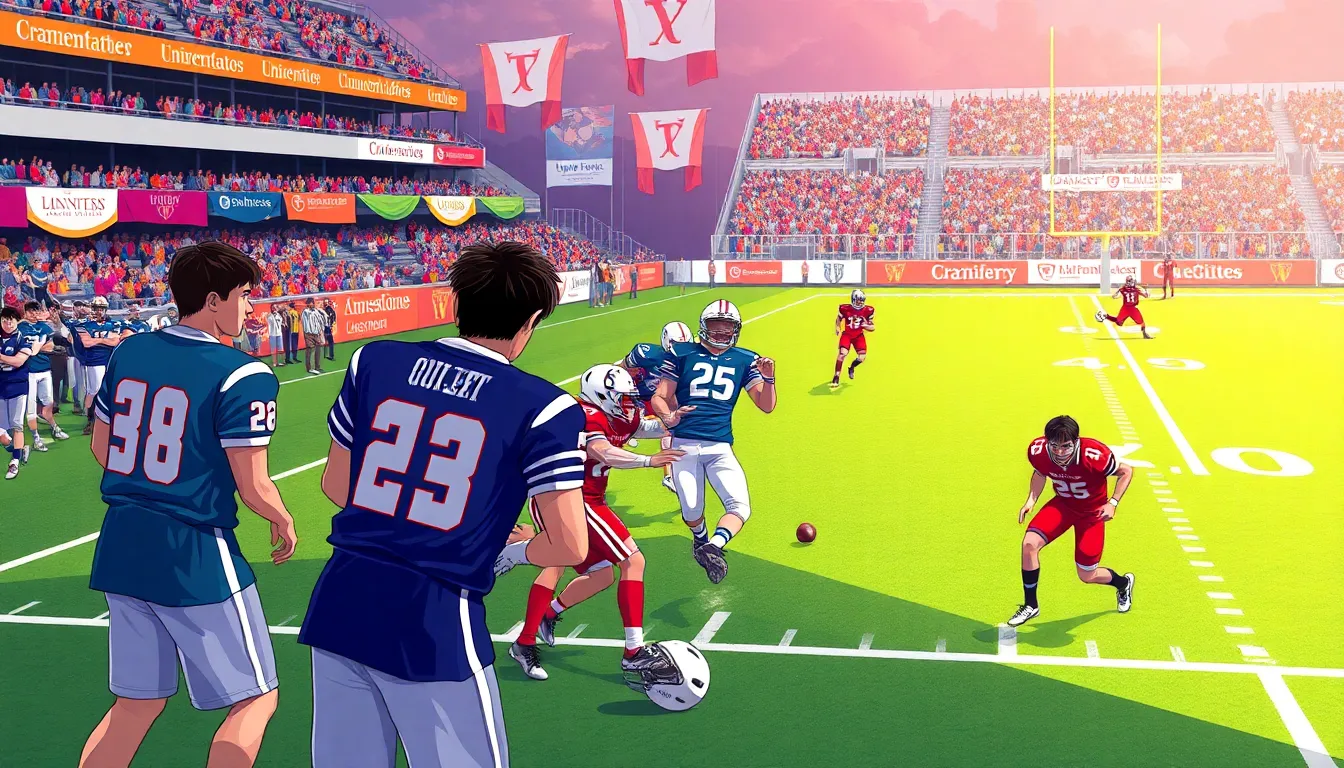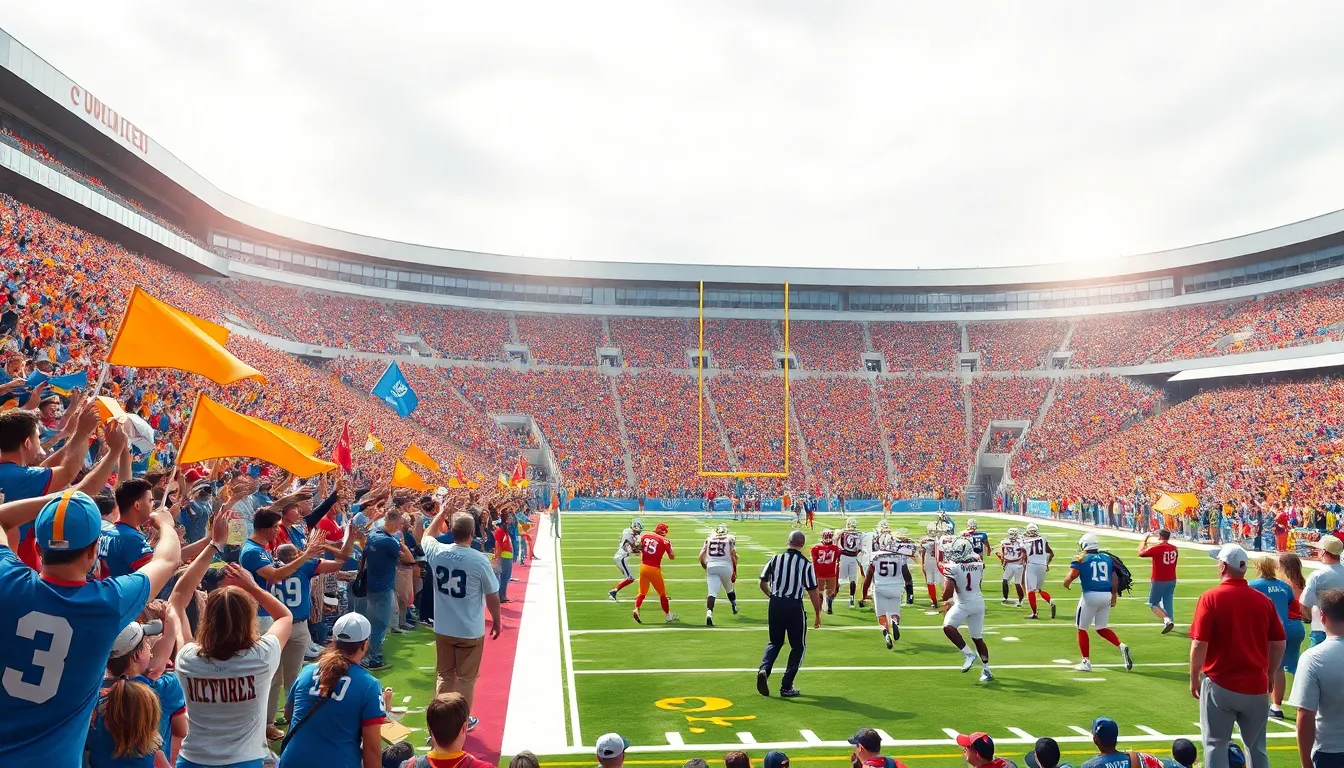When it comes to college sports, Division 1 schools are the big leagues, the crème de la crème of the athletic world. But just how many of these elite institutions are out there? Spoiler alert: it’s more than you might think! With fierce rivalries and jaw-dropping talent, these schools are where dreams are made and broken, all while keeping fans on the edge of their seats.
Table of Contents
ToggleOverview Of D1 Schools
Division 1 (D1) schools represent the highest level of NCAA athletic competition, attracting the most talented athletes. Currently, there are 357 D1 institutions across the United States. Competitive programs span various sports, enhancing the prestige of these schools.
Each D1 school operates under the governing rules of the NCAA, which sets standards for academic and athletic participation. A requirement exists for programs to maintain specific academic performance levels to compete. Sports include football, basketball, soccer, and many others, allowing diverse athletic talent to shine.
Key conferences such as the Southeastern Conference (SEC), Atlantic Coast Conference (ACC), and Big Ten Conference host most of these schools. Schools within these conferences compete for national championships, often showcasing intense rivalries that enhance fan engagement.
Athletic scholarships provide financial assistance to promising athletes, making college sports more accessible. Schools prioritize compliance with NCAA regulations, ensuring fair competition among teams. Exposure from D1 athletics often leads to professional opportunities for skilled athletes in various sports.
The level of competition in D1 schools significantly impacts athletes’ development and career prospects. Overall, D1 schools foster an environment that balances academics and athletics, preparing student-athletes for future success.
Total Number Of D1 Schools

Currently, there are 357 Division 1 schools across the United States. These institutions represent the pinnacle of collegiate athletics, drawing elite athletes and passionate fans.
Breakdown By Conference
Division 1 schools are organized into several conferences. The Southeastern Conference (SEC) boasts 14 members, known for its strong football programs. The Atlantic Coast Conference (ACC) also features 15 schools, excelling in various sports like basketball. The Big Ten Conference, one of the oldest, includes 14 universities. Other notable conferences include the Pac-12 with 12 members and the American Athletic Conference with 11. Each conference plays a significant role in shaping the competitive landscape of college sports.
Historical Growth Of D1 Schools
The number of Division 1 schools has increased over time. In 1975, there were only 162 institutions classified as D1. Growth accelerated in the late 20th century, driven by expansion and new programs. The establishment of conferences and shifting membership contributed to this trend. Today’s landscape reflects a commitment to athletic excellence and academic achievement. As institutions continue to adapt, the future of D1 schools remains dynamic, influencing college sports across the nation.
Importance Of D1 Schools
D1 schools play a vital role in shaping college athletics. They provide an elite environment that enhances the competitive experience for athletes.
Impact On Athletes
Athletes at D1 schools benefit from extensive training facilities and resources designed to optimize performance. These institutions often have dedicated coaching staff who focus on the development of skills and athleticism. Opportunities for exposure to professional leagues frequently arise through high-profile competition, increasing athletes’ chances of pursuing careers in sports. Financial support in the form of athletic scholarships eases the burden of tuition, allowing student-athletes to concentrate on both academics and athletics. Personal growth occurs alongside athletic development, as these athletes learn valuable life skills such as teamwork, discipline, and resilience during their collegiate journey.
Contributions To Academics
D1 schools emphasize the academic success of their student-athletes, with many offering robust support systems. Academic advising, tutoring programs, and study halls contribute to maintaining eligibility and fostering educational achievement. Many D1 institutions have comprehensive programs that prioritize the balance between sports and studies, instilling a sense of responsibility among their athletes. The exposure to diverse academic opportunities often leads to higher graduation rates compared to non-D1 schools. D1 schools encourage athletes to pursue their passions, equipping them with the tools needed to excel in their future careers beyond sports.
Challenges Faced By D1 Schools
D1 schools encounter several challenges that can impact their athletic programs and overall operations.
Financial Constraints
Financial constraints significantly affect D1 schools. Maintaining competitive athletic programs requires substantial funding for facilities, coaching, and scholarships. Compliance with NCAA regulations adds further financial pressure. Schools must allocate budgets efficiently to cover operational costs while striving to enhance athletic performance. Increased travel expenses for teams often strain financial resources. Additionally, revenue from ticket sales and merchandising does not always meet the demand for improved facilities. As public and private funding fluctuates, D1 schools must adapt their financial strategies to ensure sustainable growth.
Recruitment Issues
Recruitment issues pose another challenge for D1 schools. Competing with other elite institutions limits access to top-tier talent. Athletic programs often vie for the same prospects, making it crucial to establish strong relationships with high school coaches and athletes. Additionally, academic performance requirements complicate recruitment efforts, as some elite athletes may not meet eligibility criteria. The prestige of certain conferences can influence athletes’ decisions. D1 schools must showcase their unique qualities and develop robust recruitment strategies to attract the best talent. Balancing athletic and academic expectations remains essential in securing promising recruits.
The landscape of Division 1 schools is ever-evolving and continues to shape the future of college athletics. With 357 institutions dedicated to fostering both athletic and academic excellence, these schools provide a unique platform for student-athletes to thrive. The combination of competitive sports and rigorous academic standards not only enhances the college experience but also prepares athletes for successful careers beyond the field.
As challenges arise in funding and recruitment, D1 schools must adapt to maintain their status as leaders in college sports. Their commitment to excellence remains unwavering, ensuring that they will continue to play a pivotal role in the athletic development of countless individuals. The journey of D1 schools is far from over, and their impact on the world of sports will undoubtedly persist.








